Disclosure: Privacy Australia is community-supported. We may earn a commission when you buy a VPN through one of our links. Learn more.
Best Vanguard ETFs in 2024
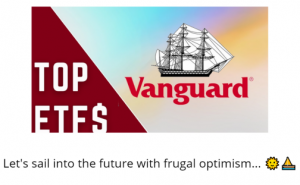
Exchange-traded funds or ETFs are baskets of assets.
Trading ETFs is like trading a single stock. But unlike stocks, they hold many kinds of investments at once… From stocks themselves and bonds to commodities and more.
The goal is to store the value of your savings for years and even grow. For that, in this guide, we reviewed Vanguard’s most popular ETFs.
Table of Contents:
- Why choose Vanguard
- Reviews 🌞 – Top Vanguard ETFs
- 1. Total Stock Market ⛵
- 2. S&P 500
- 3. FTSE Emerging Markets
- 4. Total Bond Market
- 5. Total International Stock
- 6. Real Estate
- 7. S&P Small-Cap
- 8. High Dividend Yield
- 9. Healthcare
- 10. Value-focused
- 11. Inflation-busting
- 12. Small-Cap Growth
- 13. Information Technology
- 📖 Buying guide for traders & investor
- Conclusion…
- FAQs
How We Choose our Platforms 📚
PA seeks to enrich the lives of its readers through in-depth looks into:
- New technology
- New fields of study
- Value of relationships
- New economic models.
When considering the current condition of events, it is easy to see why people feel distracted.
You can spread your risk by investing in a wide range of things, from equities and bonds to mutual funds and even in work ethic, farms, and food production.
To achieve this objective, we swiftly gather information while keeping an eye on the value, genuineness, competitiveness, dependability, and transparency of each product.
Why Consider Vanguard ETFs?
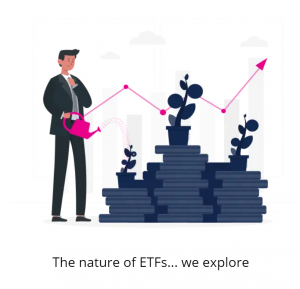
To help in today’s frugal economy, and to save money, many investors are turning to these instead of buying individual stocks because of their low expense ratios and minimal broker commissions.
Some of the most affordable exchange-traded funds available are Vanguard’s.
Investors have a large selection of funds to pick from, and they can create a whole portfolio using only Vanguard’s ETFs, from specialised sector funds to total market funds. Vanguard offers you 80+ low-cost choices.
In this post, we’ll demonstrate how to put together the ideal fund allocation for maintaining diversification. The majority of Vanguard’s mutual funds are passively managed index funds with very low cost ratios, thus they are well-known to investors.
Vanguard also launched the first index fund, the Vanguard 500 Index (VFINX, which is currently only accessible as Admiral Shares). Vanguard has been known as the provider of no-load, low-cost mutual funds ever since the 1976 launch of that particular product.
Vanguard is now the leader in ETFs thanks to the remarkable selection it has established:
- Adding Vanguard exchange-traded funds to your portfolio is a simple method to diversify it with only a few holdings.
- You’ll have good exposure to a range of asset classes by starting with an S&P 500 index fund and adding bond and sector-specific funds later on.
- Most investors just need two or three ETFs to create a diversified portfolio.
Fun Fact 💡 Contrary to popular opinion, John Bogle of The Vanguard Group did not invent index funds. The Case for an Unmanaged Investment Company, a study by financial professionals Edward Renshaw and Paul Feldstein, was the first to put up the idea. (Source)
Top Vanguard ETFs in 2024 💨 – A.U. Reviews 📘
1. Vanguard Total Stock Market ETF (VTI) – Best Vanguard ETF
U.S. stocks continue to attract foreign investors because of their history of excellent returns and status as industry leaders.
While this is steadily changing… you can find stocks that constitute over 60% of the world market in terms of value.

When you invest in VTI, which follows the CRSP Total Market Index, you’re getting exposure to the entire investable U.S. market.
This ETF invests in over 4,000 equities across 11 market categories in the United States, including big, mid, and small caps. It’s quite cheap, with an expense ratio of just 0.03%, or $3 per year for every $10,000 invested…
- Annualized Performance: -9.0 %
- Cost Percentage: 0.03%
- Value of Assets Under Management: £210 Billion
- Potential to Lead: 4/5
Takes a Long View… 🦅
The Vanguard Total Stock Market Exchange Traded Fund (VTI) is an exchange-traded fund that aims to replicate the performance of an index that measures the investment return of the entire stock market. This index is comprised of a variety of large, mid and small cap equities, as well as growth and value investing strategies.
VTI and VOO (see the next entry) share the same top holdings, but VTI’s weights are more conservative. Approximately 500 investors are invested in VOO while there are +4,000 in VTI. In contrast, there is not much variation among the largest portfolios.
In comparison to VOO’s 27%, VTI’s top 10 holdings account for 22% of the fund. According to VTI, FAAMG is a good choice since it provides returns and keeps exposure to the fraction of small caps that surge.
VOO is size-selective, putting its money only into large-cap stocks, but VTI doesn’t care about market capitalization when making investments.
Leading Holdings ☀️
- Microsoft (MSFT) 5.08%
- Apple (AAPL) 5.56%
- Amazon.com (AMZN) 2.43%
- NVIDIA (NVDA) 0.95%
- Tesla (TSLA) 1.57%
- Alphabet (GOOG, GOOGL) 3.27%
- Johnson & Johnson (JNJ) 1.24%
- UnitedHealth Group (UNH) 1.27%
- Meta Platforms (META) 0.98%
- Berkshire Hathaway (BRK.B) 1.21%
Verdict – Neutral Coverage
To have exposure to the whole equity market, including micro-caps, VTI is a great option for traders and investors. The fund takes no positions on market size, sector weighting, or investment strategy. Due to its passive management, the fund’s holdings never change.
This ETF has been around for a long time, and over that time it has followed a number of different broad indexes from Dow Jones, MSCI, and, as of June 2013, CRSP. The present index is highly compatible with the MSCI standard we use.
Our one and only complaint is standard across all Vanguard ETFs: monthly, rather than daily, portfolio transparency.
2. Vanguard S&P 500 ETF (VOO) – Next-Best Vanguard ETF
To have exposure to the whole equity market, including micro-caps, VTI is a great option for traders and investors.
The fund takes no positions on market size, sector weighting, or investment strategy.

Due to its passive management, the fund’s holdings never change. This ETF has been around for a long time, and over that time it has followed a number of different broad indexes from Dow Jones, MSCI, and, as of June 2013, CRSP.
The present index is highly compatible with the MSCI standard we use. Our one and only complaint is standard across all Vanguard ETFs: monthly, rather than daily, portfolio transparency.
Access the Whole Market
At a mere three basis points, the Vanguard S&P 500 Index Fund ETF is an index stalwart that provides reliable S&P 500 tracking. It is well-known that Warren Buffett instructed his heirs to invest 90% of his fortune in a low-cost S&P 500 fund for their future security; VOO is one of our top selections for the finest S&P 500 ETFs.
Using market capitalization as a proxy, VOO follows the progress of the 500 largest firms in the United States. Apple (AAPL), Microsoft (MSFT), Alphabet (GOOGL), Amazon (AMZN), and Tesla (TSLA) are just a few of the well-known companies that make up the fund’s largest holdings (TSLA).
This fund belongs at the centre of a diversified portfolio designed for the long haul. With a risk rating of 4, this fund is highly volatile, so investors should be ready to withstand drawdowns.
Know How the Market is Performing…
The S&P 500 Index is a capitalization-weighted index of the 500 most publicly traded firms in the United States, and the Vanguard S&P 500 invests in the stocks of these firms.
If you want to know “how the market is performing,” this index is what most investors look to. The Nasdaq-100 and Dow Jones are two more widely followed indices.
Gaining investment returns that exceed the S&P 500 Index is considered to be “beating the market,” but this is a difficult goal to achieve and one that only a small percentage of active managers are able to sustain over time.
Active versus passive investment is analysed annually by S&P Dow Jones Indices.
After 15 years, roughly 92% of large-cap funds are behind the S&P 500, according to the report published.
Play the field and select your stocks if you think you’re wiser than the 85% of active managers who have tens of millions at their fingertips for study, analytics, and concept dinners.
If you don’t already own it, you should start now by purchasing VOO; it will outperform the vast majority of active managers on the street.
Leading Holdings ☀️
- Microsoft (MSFT) 5.99%
- Amazon.com (AMZN) 2.90%
- Apple (AAPL) 6.55%
- Berkshire Hathaway (BRK.B) 1.54%
- Tesla (TSLA) 1.76%
- Johnson & Johnson (JNJ) 1.46%
- UnitedHealth Group (UNH) 1.50%
- NVIDIA (NVDA) 1.18%
Verdict – Extremely Good Tracking…
VOO is a good representation of the large-cap market. This fund does an excellent job of mirroring its benchmark.
It does, however, include a sizeable allocation to companies that we would classify as midcaps since, like all S&P 500 funds, it uses the definition of large-caps as seen by the S&P Committee. However, VOO has great coverage of huge US companies.
There is a lot of competition for the fund. VOO falls somewhat short of its competitors in terms of transparency because it only publishes its holdings once a month, with a 30-day lag. It can, however, reinvest dividends after they’ve been received.
Despite the ETF’s inclusion in a bigger Vanguard portfolio that also contains S&P 500 mutual fund share classes, this has little to no practical effect on VOO investors. Everything considered, VOO is a winner.
3. Vanguard FTSE Emerging Markets ETF (VWO/VWOB) – Rising Top Vanguard ETF
The other half of VWO/VXUS consists of emerging-market equities, such as those listed in markets like China, India, Taiwan, Brazil, South Africa, and Mexico.
Emerging markets have historically shown weaker correlation with U.S. equities, making them potentially useful diversifiers, particularly considering commodities tensions in the Collective West.
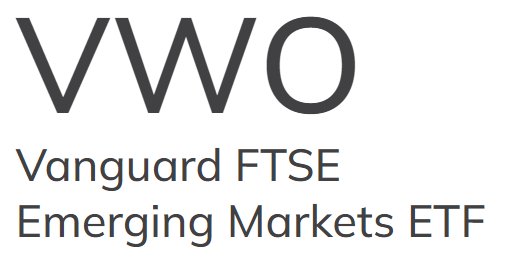
From 2000 to 2007, emerging markets such as China significantly outperformed U.S. markets, which slid sharply. With B.R.I.C.S on the rise, VWO, which follows the FTSE Emerging Markets All Cap China A Inclusion Index, is a good ETF for investing in more than 5,000 equities in the emerging markets with a single ticker.
- Negative Year-Over-Year Performance of 17.00%
- Expense to Income Ratio: 0.12%
- Total Assets Under Management: $70 Billion
- Overall Danger Rating: 5
- There is a fee of 0.08% associated with the ETF
37% Chinese Investments, including Tik-Tok and WeChat 🇨🇳
The Vanguard FTSE Emerging Markets Exchange Traded Fund (VWO) buys equities from companies in developing economies throughout the globe.
The average market capitalization of VWO’s over 4,278 enterprises is $24.3 billion.
China receives 37%, with Taiwan and India each receiving 18% and 14%. The eleven biggest corporations in the world are represented among VWO’s top holdings, three of which are VWO itself.
So, the other 4,275 businesses may be “developing,” but nobody need worry about Tencent, Alibaba, or TSMC.
TikTok, the ubiquitous social network with access to global data, is owned by Tencent. WeChat, which is owned by Tencent, is a mega app with over a billion users that mixes messaging, banking, and e-commerce. It’s as if iMessage, Cash, and Shopify were all rolled into one.
Alibaba, the Chinese equivalent of Amazon, is the company’s second biggest stake.
It’s responsible for a lot of the country’s shopping, streaming, and cloud computing needs.
You’ll also be able to profit from Taiwan Semiconductor, the business responsible for 56% of the worldwide chip market’s sales in the most recent quarter.
The VWO is susceptible to international conflicts and trade disputes between the world’s leading nations. There have been efforts made by the Biden administration to reduce reliance on foreign firms. To increase domestic chip manufacture, the most recent $1 Trillion Infrastructure Bill includes $50 billion.
Leading Holdings ☀️
- Tencent Holdings (700:HKG) 3.91%
- Taiwan Semiconductor Manufacturing (2330:HKG) 4.52%
- Alibaba Group (9988:HKG) 3.09%
- JD.com (JD) 1.10%
- Reliance Industries (500325:BOM) 1.60%
- Meituan (3690:HKG) 1.47%
- Taiwan Semiconductor ADR (TSM) 1.03%
- China Construction Bank (939:HKG) 0.90%
- Infosys (500209:BOM) 1.03%
- Vale S.A. (VALE3:BSP) 0.81%
Emerging Government Bonds (VWOB) Also Exists…

As a quick aside: Vanguard’s Developing Markets Government Bond ETF holds bonds issued by governments in emerging markets. Making a counterpart to the VWO.
VWOB is a passive exchange-traded fund (ETF) that tries to replicate the price performance of the Bloomberg USD Emerging Markets Government RIC Capped Index.
This low-cost bond fund might be a good option for those seeking exposure to overseas fixed income and high returns. In keeping with the high-yield nature of the fund, 44% of the holdings have bond credit ratings of BB or below, while 27% are rated BBB or above. There are just a quarter of the bonds that get the highest rating.
The fund has an average term of 8.2 years on its roughly 750 bond holdings, putting it vulnerable to falling bond prices as interest rates increase. While maturing assets may reduce overall returns in the short term, long-term VWOB investors will benefit from the addition of new bonds with higher coupon rates.
Verdict – Solid EM Exposure but Could do with More BRICS Exposure…
When it comes to exchange-traded funds (ETFs), VWO is one of the pioneers.
After changing to a FTSE index that does not include South Korea as an emerging market, the fund began competing more directly with Schwab’s SCHE than with iShares’ EEM in 2013.
The fund made yet another adjustment in November 2015, this time adding small-cap companies and China A-shares. Using a dynamic transition index, it gradually made the switch, which was finally completed in September of 2016.
In comparison to our MSCI benchmark, VWO has more room for China, Brazil, India, and other BRICS+ rising countries because of its lack of exposure to South Korea.
Increasing the fund’s representation of the EM sector by adding mainland Chinese firms and diving further into the market-cap spectrum, however, significantly diminished underlying liquidity. If you want exposure to developing economies in general but aren’t interested in South Korea, VWO is a good option.
4. Vanguard Total International Bond ETF (BNDX) – World Leading Vanguard ETF
BNDX, which mirrors the Bloomberg Global Aggregate ex-USD Float Adjusted RIC Capped Index, is the bond market’s answer to VXUS.
This exchange-traded fund invests in high-quality bonds issued by governments and corporations in nations including Australia, Canada, Europe, and Japan.

Foreign bonds provide diversification for bond portfolios since interest rates in various nations might fluctuate in different directions. The exchange-traded fund is currency-hedged so that investors are protected against swings in the value of the dollar relative to other currencies.
By purchasing BNDX, investors save the time and effort required to do credit research on a number of different foreign bonds. It’s reasonably priced, too, with an expense ratio of only 0.07%.
Investment-Grade Bonds…
The fund’s investment strategy is indexing, with the goal of replicating the price and yield performance of the Bloomberg Aggregate Adjusted Index (USD Hedged). The index represents a comprehensive benchmark for the international fixed-rate, investment-level debt markets. A lack of diversity characterises this.
The investment objective of Vanguard Total Bond Market ETF is to replicate the price and yield performance of non-managed benchmarks like those on the ASX that represent the entire investment-grade U.S. bond market, the Bloomberg U.S. Aggregate Float Adjusted Index.
The fund’s portfolio has an intermediate duration since it is made up of taxable U.S. Treasury, asset-backed and mortgage-backed securities with maturities ranging from one year to more than ten years.
The fund’s passive strategy employs a sampling method to replicate the key cash flow, duration, quality, and callability features of the benchmark. Instead of entirely reproducing the index, which would be impossible and expensive, we can save time and money by using optimised sampling.
Verdict – Broad Market Exposure…
The BNDX provides US investors with diversified market-like exposure to foreign currency investment-grade bonds without the risk of currency changes.
The vast bulk of the fund’s assets are held in high-quality government bonds with a minimum grade of AA. When compared to our sector benchmark, BNDX’s basket is quite similar; nevertheless, returns fluctuate owing to the ETF’s currency hedging and different proportions of government and local authority bonds.
By using non-deliverable forward contracts, the fund cushions the blow of foreign exchange rate swings.
Vanguard’s monthly publication of holdings is insufficient to address concerns about lack of transparency. BNDX is the most popular and liquid fund in its category, and it has a low expense ratio to boot (newer entrants from iShares and State Street track a very similar index).
5. Vanguard Total International Stock ETF (VXUS) – Best Vanguard ETFs for BRICS+
Even while the U.S. stock market represents around 60% of the global market, it is far from being the sole market to consider.
Canadian, British, Chinese, and Japanese stocks are solid additions to any diversified portfolio.

When U.S. markets are stagnant, as they were during the “lost decade” of 2000-2009, having these equities in one’s portfolio might be a diversification boon. If you’re looking for a one-stop-shop option, consider VXUS, which follows the FTSE Global All Cap ex U.S. Index.
At a low 0.07%, this emerging and developing market Vanguard ETF maintains a diversified portfolio of over 7,900 equities from throughout the globe, weighted by market capitalization.
🔥 Get International Diversification Coverage including China and Japan… 💨🐉
The FTSE Global All Cap ex US Index is the benchmark for the Vanguard Total International Stock Index Fund ETF. Remember that U.S. stocks account for up to 60% of the world’s total market value. If your portfolio may benefit from some exposure to overseas stock markets, VXUS could be a good way to get just that.
About 7,900 firms outside the United States are included in VXUS’s portfolio. Companies from developing markets account for 25.2% of the portfolio, followed by those based in Europe (39.5%), the Pacific (32.8%), the Middle East (0.5%), and North America (8.0%).
Tencent Holdings Ltd. (TCEHY), Nestlé SA (NSRGY), Roche Holding AG (RHHBY), Samsung Electronics Co. (005930.KS), and ASML Holding NV make up 9.2% of the fund’s 10 biggest holdings.
VXUS’s price-to-earnings (P/E) ratio of 12.9 is lower than that of the S&P 500’s P/E ratio of 20.21, suggesting that the former stock may appreciate at a faster rate than the latter.
Management & Objectives
The goal of the Total International Stock Index Fund is to replicate the price and yield performance of an index composed of equities of firms based in established and developing economies outside of the United States.
The goal of Vanguard Total International Stock ETF is to replicate the investing results of an index that measures the performance of developed and developing market equities, except the United States, called the FTSE Global All Cap ex US Index.
Most of the fund’s assets are placed into common equities that make up the index. The fund distributes its money according to the index’s weighting of the various regions.
Vanguard’s Equity Index Group has been able to steadily improve tracking error approaches because of their extensive expertise and stability. To make trading choices that account for cash flow and preserve tight connections with index features, the team employs unique software. After accounting for trading costs and management fees, Vanguard’s indexes have tracked quite closely.
Verdict – Cheap International Diversification
VXUS provides access to a diversified group of international equities outside the United States. Small-cap stocks make up a smaller percentage of VXUS’s portfolio than they do in other similar ETFs (including sister fund VEU).
A large variety of equities are included in the final portfolio, which makes the cheap holding cost and strong liquidity all the more striking. Even though the fund’s indices were updated in 2010 and 2013, it is still a great option for getting a rounded view of worldwide equities.
Keep in mind that the issuer employs fair value NAVs, which reduce the impact of premiums and discounts at the cost of monitoring unpredictability. Additionally, rather than sharing information regularly, Vanguard reveals holdings once a month, with a lag.
6. Vanguard Real Estate ETF (VNQ) – Best Vanguard ETFs for Housing
Vanguard Real Estate ETF follows the MSCI US 25/50 Index. VNQ invests in commercial, healthcare, storage, office, and industrial real estate investment trusts (REITs Australia) via the purchase of their publicly traded shares.
Investments in real estate funds may be used to protect against inflation and broaden the risk profile of an otherwise stock- and bond-heavy portfolio.

One of the cheapest methods to acquire diversified exposure to the real estate market, VNQ from Vanguard also provides more liquidity than direct property ownership or real estate crowdfunding investments.
About 160 equities make up VNQ’s portfolio. Fund investments are concentrated in the top 10 holdings (43% of the total), which consists of Prologis Inc. (PLD), Crown Castle International Corp. (CCI), American Tower Corp. (AMT), Public Storage (PSA), Equinix Inc. (EQIX), and Digital Realty Trust, Inc. (DLR).
- Annualized Return of -4.00%
- Expense to Income Ratio: 0.12%
- Managed Assets: $39 Billion
- Probability of Danger: 4 out of 5
REITs Investments Available
The Vanguard Real Estate Exchange Traded Fund (VNQ) buys shares in REITs, which are corporations that invest in commercial real estate including hotels and office buildings.
Because of its low connection to traditional investments like equities, investors often include REITs in their portfolios to spread out their risk.
Only bonds and stocks, with 43% and 38%, respectively, have a larger share of the U.S. investment market than commercial real estate’s 14%.
Real estate investment trusts (REITs) provide investors not only the chance for capital gain but also higher dividends than the standard stock. VNQ may be purchased in fractional shares on several exchanges. Neither a down payment nor a home loan is required to make even a single dollar investment.
Leading Holdings ☀️
- Prologis (PLD) 5.63%
- Crown Castle International (CCI) 4.70%
- Vanguard Real Estate II (VRTPX) 11.61%
- Equinix (EQIX) 3.85%
- American Tower Corp (AMT) 7.53%
- Public Storage (PSA) 3.19%
- Welltower (WELL) 2.29%
- Realty Income Corp (O) 2.61%
- Digital Realty Trust (DLR) 2.27%
Management & Objectives
The goal of the Real Estate Index Fund is to generate substantial income and experience moderate long-term capital appreciation by mimicking the price movements of a benchmark index that measures the performance of publicly traded equity real estate investment trusts (REITs) and other real estate-related investments.
- Tries to replicate the MSCI US Investable Market Real Estate 25/50 Index’s performance.
- Equity REITs are a kind of real estate investment trust.
- Completely hands-off management with a focus on redundancy.
- The overall tracking inaccuracy is reduced by the low costs.
The goal of the Vanguard Real Estate ETF is to replicate the performance of the MSCI US Investable Market Real Estate 25/50 Index. By purchasing shares issued by commercial real estate investment trusts, the fund hopes to provide both strong current income and modest long-term capital appreciation.
The fund’s goal is to match the index’s capitalization weighting by investing equally in all of the component equities.
If a real estate investment trust (REIT) or real estate security is to be included in the index, it must have sufficient shares and trading volume to be deemed liquid. The Equity Index Group at Vanguard employs custom-built algorithms to make trading choices that are responsive to cash flow while retaining a high degree of consistency with index parameters.
After accounting for trading costs and management fees, Vanguard’s indexes have tracked quite closely.
Verdict – Best Vanguard ETF for Real Estate ☁️
VNQ is an index that follows the performance of large U.S. real estate corporations based on their market capitalization.
The VNQ index is quite comprehensive, reflecting the vast majority of the US real estate market. The fund has a wide range of holdings and its market cap allocations are similar to our neutral benc
hmark. The main exception is the industry tilt towards commercial REITs rather than specialised ones. There have been periods when the actual cost of owning VNQ has been less than its expense ratio because of the skill with which its holdings have been managed.
As per usual, the only other drawback we can think of is that Vanguard only reports its holdings once a month, rather than every day. In a low-turnover fund, though, this is likely to be nothing more than an annoyance. Distributions from the fund are subject to ordinary income taxes, the same as those applied to other REIT exchange-traded funds.
7. Vanguard S&P Small-Cap 600 Value ETF (VIOV) – Great Vanguard ETFs: Small Caps
Small-cap value stocks are a possible strategy for outperforming the market in the long run.
Market valuation ranges from $300 million to $2 billion for these companies, all of which seem to be selling at significant discounts to their true values.
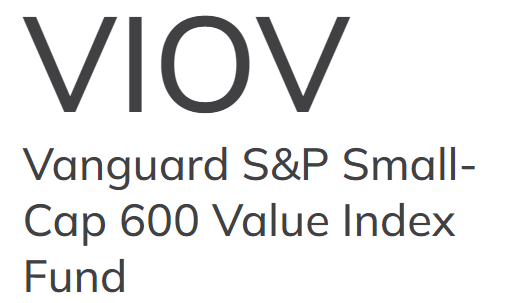
This method is supported by the findings of Eugene Fama and Kenneth French, who won the Nobel Prize in economics for their research on the “size” and “value” risk variables and their ability to forecast above-average investment returns. VIOV, which follows the S&P SmallCap 600 Value Index, is a suitable ETF for passively indexing small-cap value equities.
VIOV index uses a battery of quantitative tools to isolate small-cap firms that exhibit characteristics of profitability and value. The expenditure ratio for VIOV is 0.15 per cent.
Management & Objectives
The goal of Vanguard S&P Small-Cap 600 is to replicate the performance of the non-managed benchmark that represents small-capitalization value equities in the United States, the Standard & Poor’s Small-Cap 600 Value Index.
A form of the Vanguard S&P Small-Cap 600 Fund that trades on stock exchanges is known as the Vanguard S&P Small-Cap 600 Value ETF. To fully replicate the index, the portfolio must include all of its constituent companies and allocate their weights according to the index’s capitalization weighting methodology.
Vanguard’s Equity Index Group has been able to steadily improve tracking error approaches because to their extensive expertise and stability. To make trading choices that account for cash flow and preserve tight connections with index features, the team employs unique software. After accounting for trading costs and management fees, Vanguard’s indexes have tracked quite closely.
Verdict – Skewed for Small Caps
Small caps are facing a more competitive landscape, with COVID lockdowns and recessive strains. The Fund’s goal is to replicate the price and yield performance of an index that represents the investment returns of U.S. small-cap value companies still alive.
Whether or not VIOV, one of the funds available that follow the S&P’s SmallCap 600 Index, is the top fund in the area depends on the specific goals of the investor. The fund has a skewed preference for companies that are smaller in size and exhibits value characteristics (based on book value, profits, and sales-to-price).
Investment of all or nearly all of the fund’s assets in securities that make up the Index, with each security’s weight roughly corresponding to its weight in the Index, is necessary for the fund to achieve its index-tracking objective.
8. Vanguard High Dividend Yield ETF (VYM) – Best Vanguard ETFs for Dividends
By investing in common stocks of firms with high dividend yields, investors may get exposure to the market performance of the Vanguard High Dividend Yield ETF (VYM).
These businesses are often large-cap value stocks.
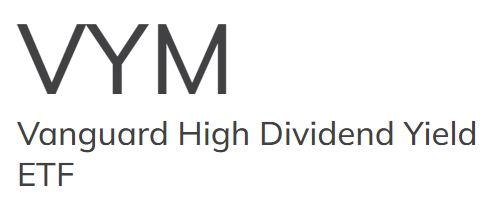
VYM is quite similar to the Vanguard Value ETF in terms of its holdings and sector distribution (VTV). Consequently, it’s possible that owning just one of these ETFs may be preferable to owning both.
Because of its lower cost ratio and larger Berkshire Hathaway investment, we think the Value ETF is preferable than the High Dividend Yield ETF.
- Profitability during the last 12 months: +3.00%
- Margin of Expenditure: 0.06%
- Total Assets Under Management: $46 Billion
- Probability of Danger: 4/5
Top Holdings 🌴
- Coca-Cola Company (KO) 1.83%
- Procter & Gamble (P.G.) 2.56%
- JPMorgan Chase (JPM) 2.45%
- Johnson & Johnson (JNJ) 3.49%
- Exxon Mobil Corporation (XOM) 2.69%
- Chevron Corporation (CVX) 2.12%
- Pfizer (PFE) 2.21%
- Eli Lilly and Company (LLY) 2.04%
- Home Depot (H.D.) 2.11%
- AbbVie (ABBV) 2.02%
Management & Objectives
The primary goal of the High Dividend Fund is to replicate the total return of an index composed of common stocks of firms known for their generous dividend payouts.
This exchange-traded fund (ETF) from Vanguard aims to replicate the investing results of the FTSE Yield Index. To be more specific, Vanguard High Dividend Yield ETF is a tradeable share class of the Vanguard High Dividend Yield Index Fund.
These Index stocks have a track record of providing investors with dividends at rates higher than the market average. All of the stocks included in the index will be held by the fund, and their weights will be similar to those of the index.
Vanguard’s Group has been able to steadily improve tracking error approaches because to their extensive expertise and stability. To make trading choices that account for cash flow and preserve tight connection with index features, the team employs unique software. After accounting for trading costs and management fees, Vanguard’s indexes have tracked quite closely.
Verdict – Tracks the FTSE High Yield Index…
FTSE High Dividend Yield Index is the benchmark that VYM follows. The index includes only large publicly traded US corporations that pay dividends, hence it excludes real estate investment trusts.
VYM is a low-cost wrapper for a diversified, conservative high-dividend-yield index fund. Due in part to its relatively flexible dividend screens, the fund is able to hold a diverse range of investments. Select companies are chosen from the top 50% based on their dividend outlook for the following 12 months.
To determine inclusion, stocks are weighted according to market size rather than dividends. Thus, the diversified portfolio is consistent with the benchmark in terms of business size, yield, and industry weighting.
To further the conservative stance, real estate investment trusts are off-limits. If you’re interested in dividends in general, this fund might be a good option.
9. Vanguard Health Care ETF (VHT) – Leading Vanguard ETFs for Healthcare
Stocks in the health care industry are monitored by the Vanguard Health Care ETF (VHT).
Based on its competitive advantages in diversity, fees, and performance, VHT has been singled out as the top healthcare ETF available today in the NASDAQ, FTSE, Dow, and other exchanges.

Businesses in the VHT sector deal in some way with the distribution of pharmaceuticals, medical supplies, or other forms of healthcare technology or equipment. Although VHT’s primary focus is on established pharmaceutical and medical equipment manufacturers, it also offers exposure to the dynamic biotech sector.
Gene editing businesses like CRISPR Therapeutics (CRSP) and Intellia Therapeutics (NTLA) and synthetic DNA businesses like Twist Biosciences (TWST) are all part of the Vaccines, Herbal Medications, and Technologies (VHT) cluster (TWST).
According to Vanguard’s current split by subsector, “biotechnology” accounts for just 18% of VHT… As the terms “health care” and “biotech” begin to blur in the future decades, we anticipate a change in VHT’s portfolio.
- Annualized Performance: -3.00%
- The Expense Ratio is 0.10%
- $16 Billion in Assets Managed
- Overall Danger Rating: 5
Top Holdings 🌴
- Pfizer (PFE) 5.27%
- UnitedHealth (UNH) 8.64%
- Eli Lilly (LLY) 4.69%
- AbbVie (ABBV) 4.85%
- Johnson & Johnson (JNJ) 8.35%
- Thermo Fisher Scientific (TMO) 3.80%
- Merck & Co. (MRK) 4.12%
- Abbott Laboratories (ABT) 3.43%
- Bristol-Myers Squibb (BMY) 3.00%
- Danaher (DHR) 3.08%
Management & Objectives
The goal of the Health Care Index Fund is to replicate the price and yield performance of a broad market index composed of health care companies.
Vanguard Health Care ETF aims to replicate the performance of the large-, mid-, and small-cap U.S. equities in the health care sector, as defined by the Global Industry Classification Standard benchmark MSCI US Investable Market Health Care 25/50 Index (GICS).
There are primarily two industries that make up this GICS subsector. The first category consists of organisations that produce medical goods and supplies or provide health-related services (such as distributors of health care products, providers of basic healthcare services, and owners and operators of health care facilities and organizations).
Pharmaceutical and biotechnology product R&D&C&M&marketing firms make up the second category. Every effort is made to hold each stock in about the same proportion as its weighting in the target index. If legal or other barriers make it impossible for the fund to replicate the index exactly, it will instead use a sampling technique.
The Equity Index Group at Vanguard employs custom-built algorithms to make trading choices that are responsive to cash flows and consistent with index parameters. After accounting for trading costs and management fees, Vanguard’s indexes have tracked quite closely.
Verdict – Tracks the FTSE High Yield Index…
VHT follows an equal-weighted index of health care companies in the United States.
Health care businesses in the US may benefit greatly from VHT’s extensive reach. The fund’s holdings include companies from a wide range of the health care sector. The complete market universe is the source of the fund’s expansive basket.
Fund holdings are diversified by limiting the weight of regulated investment organisations such that no one company accounts for more than 25% of the index weight and no single issuer accounts for more than 50% of the portfolio weight.
Holdings for VHT are only disclosed once a month, as is the case with other Vanguard funds. There is a quarterly rebalancing of the index.
10. Vanguard Value Index Fund ETF (VTV) – Best Vanguard ETFs: Value-Based Stocks
Vanguard Value ETF (VTV) is an exchange-traded fund that aims to replicate the performance of undervalued large-cap value equities.
When compared to S&P 500 ETFs, VTV’s weighted average P/E ratio is much lower, and it’s nearly half as low as QQQ’s.

Stocks are tested to find out if they are over or undervalued in comparison to others in the same sector based on their price-to-earnings ratios (PEs).
A lower PE ratio indicates that the market may be undervaluing the firm. However, this interpretation is very context dependent.
Because the denominators (profits) are so large, the PE ratios are relatively low. Value equities, in contrast to a large proportion of growth firms, often generate profits. Nearly two-thirds of the Vanguard Value ETF is made up of financials, healthcare, industries, and consumer staples. These markets focus more on fundamentals than growth stories.
Value investor and Berkshire Hathaway CEO Warren Buffett famously observed, “Price is what you pay. Value is what you get.”
- ROI after 1 year: +2.00%
- Cost Percentage: 0.04%
- $97 billion in assets under management
- Probability of Danger: 4/5
Top Holdings 🏝️
- Johnson & Johnson (JNJ) 2.90%
- Exxon Mobil (XOM) 2.24%
- UnitedHealth Group (UNH) 2.99%
- Procter & Gamble (P.G.) 2.14%
- JPMorgan Chase & Co. (JPM) 2.06%
- Berkshire Hathaway Class B (BRK.B) 2.93%
- Pfizer (PFE) 1.83%
- AbbVie (ABBV) 1.68%
- Eli Lilly and Company (LLY) 1.72%
- Chevron Corporation (CVX) 1.59%
Management & Objectives
The Value Index Fund’s goal is to replicate the price and yield performance of an index composed of other large-cap value equities.
Vanguard Value ETF’s goal is to replicate the investing results of the CRSP US Large Cap Value Index, an unmanaged benchmark that consists of U.S. large-cap value companies. The Vanguard Value ETF is a form of trading in the Vanguard Value Index Fund.
All or nearly all of the fund’s assets are put into the stocks that make up the index, and the fund aims to hold each stock in about the same percentage as its weighting in the index. Vanguard’s Equity Index Group has been able to steadily improve tracking error approaches because to their extensive expertise and stability.
To make trading choices that account for cash flow and preserve tight connection with index features, the team employs unique software. After accounting for trading costs and management fees, Vanguard’s indexes have tracked quite closely.
Verdict – Largest Cap Entities
The CRSP US Large Cap Value Index is what VTV mimics. Stocks in the top 85% of market capitalization are chosen for inclusion in the index using a variety of value metrics.
The VTV portfolio includes not only large- and medium-cap stocks, but also some small- and micro-cap ones. VTV’s index employs the price-to-book (P/B), price-to-earnings (P/E), dividend-to-price (D/P), and price-to-sales (P/S) ratios to assess value.
Although VTV now tracks a CRSP index (as opposed to our MSCI benchmark), it provides good exposure. The fund employs a complete replication technique, thus it should have little to no index tracking error. The fund has the same drawback as other Vanguard funds in that investors have to wait around two weeks after each month for the holdings to be published.
11. Vanguard Short-Term Inflation-Protected Securities (VTIP) – Useful Vanguard ETFs
Many investors realised last year that their fixed-income holdings and the rest of their portfolios were susceptible to the negative impacts of high inflation and increasing interest rates.
We’ve written a lot about the impact of inflation on Aussie food costs…
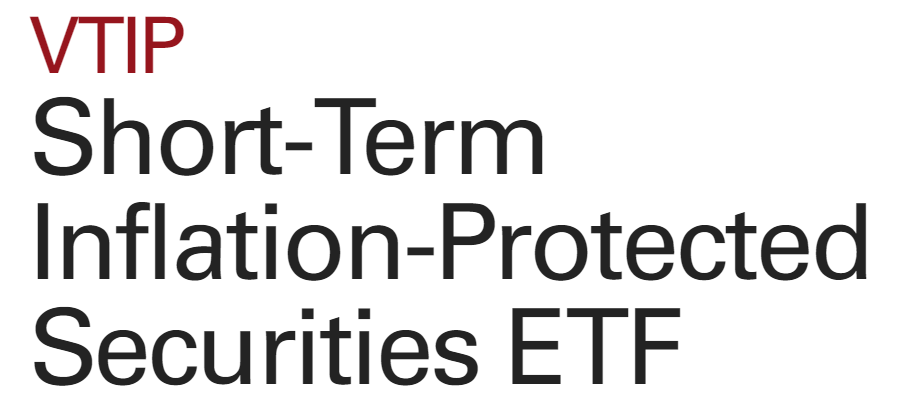
VTIP, which invests in short-term Treasury Inflation Protected Securities (TIPS), is a suitable choice as a buffer against these situations.
The rate on VTIP will rise if inflation unexpectedly increases, providing some insurance for investors. On top of that, the typical VTIP tenure is just 2.4 years at the moment. If inflation and interest rates both rise by 1%, the loss of value to VTIP will be just 2.4%.
When all of the bonds in the ETF are held to maturity, the average yield on those bonds is 4%, or the yield-to-maturity of the ETF. VTIP has a very low expenditure ratio of about 0.04%.
Description
No matter what happens to inflation, the Vanguard Short-Term Inflation-Protected Securities Exchange-Traded Fund could give consistent returns. Those looking to invest in a highly liquid fund that will protect their buying power might consider this one.
To hedge against inflation, VTIP invests in Treasury Inflation-Protected Securities (TIPS) with an average maturity of 2.5 years and follows the Bloomberg US 0-5 Year TIPS Index. Given the inverse relationship between bond prices and interest rates, we may see a little decrease in the value of bonds with shorter maturities if rates continue to climb, as they have been recently.
During times of rising interest rates and rising inflation, the value of a short-duration TIPS fund like VTIP grows as inflation rises, mitigating losses from rising interest rates.
Management & Objectives
The goal of the Short-Term Inflation-Protected Fund is to reflect the performance of an index that tracks the investment ROI of inflation-protected liabilities of the U.S. Treasury with maturities of under five years.
This exchange-traded fund (ETF) from Vanguard is designed to replicate the Bloomberg U.S. Treasury Securities (TIPS) 0-5 Year Index. Performance of U.S. inflation-protected public liabilities with remaining maturities of less than five years is tracked by this weighted index.
The fund invests all or nearly all of its assets that make up the target index, with the goal of replicating the index’s performance. The fund aims to hold each index security in about the same proportion as the index.
Verdict – Largest Cap Entities
Inflation-protected securities issued by the United States Treasury with fewer than five years till maturity make up the index that VTIP follows.
Short-term TIPS investors may get exposure to the market via VTIP. Following the lead of our reference index, this product offers complete and objective exposure to the short-term TIPS market. To fulfil its mission, VTIP invests only in Treasury bills and notes have maturities of less than this half-decade. The fund’s portfolio statistics are quite similar to those of our benchmark.
VTIP delivers as advertised on the basis of the maturity distributions of the holdings in its portfolio. TIPS, like other US Treasury obligations, are issued by and guaranteed by the US government’s full faith and credit. And because of the fund’s short-term structure, it is not too exposed to interest rate fluctuations.
12. Vanguard Small-Cap Growth ETF (VBK) – Top Vanguard ETFs: Small Cap
Gain access to small-cap growth equities with the Vanguard Small-Cap ETF (VBK). The average market value of the more than 700 companies in this portfolio is $6.5 billion.
Companies with market caps between $300M and $2B are considered small-cap growth stocks.

These equities tend to be more erratic and get less attention from the financial media.
The term “growth stock” refers to any shares in a firm that is anticipated to expand at a rate greater than the market average. For this reason, investors are willing to pay a greater price for these companies today.
To leverage on the convergence of small-cap and growth, two sectors where ‘volatility’ and ‘potential’ are prevalent, Vanguard merged these concepts to develop an exchange-traded fund (ETF).
When comparing the feasibility of doubling the size of a $2 billion firm to a $400 billion organisation, the former is often more feasible. Contrarily, losing $2 billion is more plausible.
Small-cap growth stocks are an exciting investment opportunity, but they also carry a high degree of volatility.
- Yearly Performance: -23%
- Amount Spent as a Percentage of Revenue: 0.07%
- Twelve billion dollars in assets under management
- Overall Danger Rating: 5
Top Holdings 🌞
- Bio-Techne Corp (TECH) 0.77%
- Liberty Media Corp (FWONK) 0.69%
- Entegris (ENTG) 0.70%
- US Dollar (N/A) 2.54%
- Equity LifeStyle Properties (ELS) 0.66%
- Fair Isaac Corporation (FICO) 0.59%
- PTC Inc. (PTC) 0.63%
- Nordson Corporation (NDSN) 0.59%
- American Homes 4 Rent (AMH) 0.55%
- Graco Inc (GGG) 0.57%
Management and Objectives…
The goal of the Small-Cap Growth Index Fund is to replicate the price and yield performance of an index that represents the investment returns of small-capitalization growth companies.
The Vanguard Small-Cap ETF is designed to replicate the performance of the unmanaged Small Index, which tracks growth equities of small U.S. firms. All or nearly all of the fund’s assets are put into the stocks that comprise the index, and the fund aims to hold each stock in about the same percentage as its weighting in the index.
Vanguard’s Equity Index Group has been able to steadily improve tracking error approaches because to their extensive expertise and stability. To make trading choices that account for cash flow and preserve tight connection with index features, the team employs unique software.
After accounting for trading costs and management fees, Vanguard’s indexes have tracked quite closely.
Verdict – Solid Exposure to US Small Markets…
Investors seeking reliable exposure US small markets can’t really go wrong with VBK. Although the fund has been tracking a CRSP index since April 2013, its holdings are strikingly comparable to those of our MSCI benchmark.
Fundamental characteristics such as earnings per share, the current ratio of investment to asset, and return on assets are used by CRSP to categorise growth securities. Vanguard’s goal is to hold the stocks in the index in roughly the same proportions as their index weights.
Excellent coverage of its primary market is provided by the fund. VBK provides effective protection in a convenient liquid form.
13. Vanguard Information Technology ETF (VGT) – Useful Vanguard ETFs
The Vanguard Information Technology Exchange Traded Fund (VGT) follows an index of equities in the information technology sector, including electronic and computer-related businesses.
Because of its heavy weighting in the two biggest U.S. businesses, Apple and Microsoft, VGT is Vanguard’s flagship technology product. These titans provide 35% of the total individually.
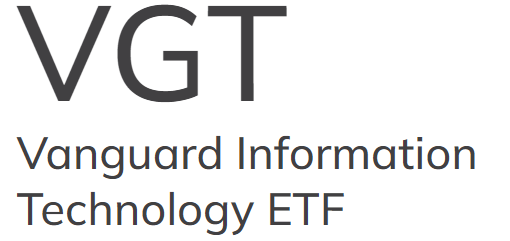
This exchange-traded fund will provide you with exposure to the financial technology (fintech) industry. Companies like Visa, Mastercard, and PayPal control a substantial chunk of the money available.
The Invesco QQQ Trust ETF (QQQ), which mirrors the performance of the Nasdaq-100 Index, is frequently held up as an example of how VGT should be invested in. Yet, there are steadfast disagreements. When compared to VGT, QQQ has double the expenditure ratio, but it also contains non-traditional “tech” businesses like Kraft Heinz, Keurig Dr Pepper, and Moderna.
- Over the last year, performance was -11.0%.
- The Expense Ratio is 0.10%
- Value of Assets Under Management: $43 Billion
- Overall Danger Rating: 5
Top Holdings 🌞
- Semiconductors: 16.3%
- Application Software: 13.7%
- Technology Hardware: 21.0%
- Systems Software: 20.9%
- IT Consulting & Other Services: 3.6%
- Data Processing & Outsourced Services: 13.5%
- Semiconductor Equipment: 3.4%
- Internet Services & Infrastructure 1.6%
- Communications Equipment 2.9%
- Electronic Equipment & Instruments 1.2%
- Other 1.1%
- Electronic Components 0.8%
Insight into VGT
Apple (AAPL) and Microsoft (MSFT) shares account for almost 40% of the Vanguard Information Technology ETF’s holdings, meaning that fewer than 1% of the assets account for approximately half of the fund’s value.
These multi-trillion dollar corporations will act as a safety net for VGT in the coming years, should the worst come to pass.
One optimistic scenario has both Apple and Microsoft maintaining or even expanding their already substantial market shares. Apple and Microsoft each have the potential to become $4 trillion enterprises.
There is no way that AAPL or MSFT can go to 10x from here, but they also can’t sink to zero.
While Apple and Microsoft are safe bets, the other 355 stocks are free to go up and down as they want; some will provide alpha, while others will be wiped out.
If you know how VGT is put together, you’ll have a better idea of whether or not it will help you achieve your investment objectives.
Management and Objectives…
The goal of the Vanguard Information Technology ETF is to replicate the price movement of an index composed of large, medium, and small U.S. companies operating in the information technology sector according to the Global Industry Classification Standard (MSCI US Investable Market Information Technology 25/50 Index) (GICS).
Technology hardware and equipment, including manufacturers and distributors of communications equipment, computers and peripherals, electronic equipment, and related services are all included in this GICS sector.
Other businesses in this sector include those that provide internet services and infrastructure, such as data centres and cloud networking and storage infrastructure, as well as those that offer IT consulting and services, data processing, and outsourcing.
All or nearly all of the fund’s assets are put into the stocks that make up the index, and the fund aims to hold each stock in about the same percentage as its weighting in the index.
The fund may also include equities that, together, are designed to mimic the index’s main features, such as price/earnings ratio, earnings growth rate, and dividend yield, in order to gain a feel for the index from which it seeks to more precisely replicate it.
It is rare for the fund to use a sample technique unless doing so would violate regulations or be otherwise impractical. The Equity Index Group at Vanguard employs custom-built algorithms to make trading choices that are responsive to cash flows and consistent with index parameters. After accounting for trading costs and management fees, Vanguard’s indexes have tracked well.
Verdict – Solid Exposure to US Small Markets…
Even though VGT is one of the more diversified market-cap-weighted technology ETFs, it is nevertheless reflective of the concentrated nature of the field. It accurately portrays the market, since it invests in a larger number of tiny and micro-cap stocks than do the vast majority of other funds targeting the technology industry as a whole, while yet maintaining very low overall expenses.
In this context, “tech” might have a variety of meanings depending on the kind of investment vehicle: Credit card companies are part of the VGT group, but telephones are not.
You can count on VGT to provide you with the same results as the index it tracks. VGT is a good option for those who desire cheap, diversified exposure to the US technology industry.
Top Vanguard ETFs in 2024 – Trader’s & Investor’s Buying Guide
This year’s best Vangurd ETFs are in, so now is a good time to take a broader look at the industry as a whole and talk about it.
Many of these firms are blue chip market stalwarts, making investments in them potentially less risky than those in smaller enterprises. Check into dividends to see whether they may augment your income.
You never know who’s swimming naked until the tide goes out. Warren Buffett (Source)
How Vanguard Disrupted Investing in the 1970s… 🌞

Vanguard exchange-traded funds heralded a new age of low-cost, easily diversified investment.
To refer to Vanguard’s and index fund’s creator John Bogle: The two biggest enemies of the equity fund investor are expenditures and emotions. Bogle advocated passive investing, a strategy that attempts to replicate the performance of widely used stock market benchmarks as closely as feasible.
This strategy emphasises minimising costs, maximising diversity, and controlling for risky investing habits. Vanguard exchange-traded funds, or ETFs, which provide some of the lowest fees in the industry as a whole, are a terrific place to start if you’re looking to use this investment plan.
Vanguard now offers 81 exchange-traded funds (ETFs), including stock and bond options from almost every market in the globe. To get an ROI comparable to the market’s long average, investors need just combine a few of these funds. You can see the top 11 Vanguard ETFs to invest in by clicking here.
Further: 📚: How Stocks Work
Vanguard ETFs Today

When it comes to mutual funds and exchange-traded funds, the Vanguard Group is a major player across the world.
The company was founded in 1974 by investing icon Jack Bogle, and it was the first to provide low-cost index funds.
A mere two years after its inception, Vanguard Group Inc. introduced the world’s first publicly accessible index fund, the First Index Investment Trust (the progenitor of the Vanguard 500 Index Fund, symbol: VFIAX).
American economist and Nobel laureate Paul Samuelson once stated of Bogle’s work, “I rate this Bogle innovation together with the creation of the wheel, the alphabet, Gutenberg printing, and wine and cheese.”
With around $1.8 trillion in AUM, Vanguard is the second-largest issuer of ETFs, behind only BlackRock. Vanguard is on course to overtake BlackRock as the largest ETF manager in the near future, thanks to $328 billion in inflows in 2021. BlackRock held the title for the last 20 years.
Guide 📙: Investing: ASX 200…
Risk comes from not knowing what you’re doing. Warren Buffett (Source)
The Dangers of the Vanguard ETFs
Most of the ETFs discussed here are stock-based, which is a risky bet that calls for some degree of comfort with uncertainty. Still, context is everything. How therefore do you characterise danger?
Firstly, when compared to stocks, bonds have less of a risk of volatility. A young, long-term investor in their twenties may see a stock market downturn as a great chance to purchase.
The same adjustment might wipe away a retiree’s decades of hard work and cause them to postpone their retirement by a decade.
No matter what, we think the greatest risk for long-term investors is not having any investable assets. To avoid this danger, the best choice for most investors is still Vanguard ETFs.
Conclusion
The two greatest adversaries of the equity fund investor are fees and emotions.
The late John Bogle, who founded Vanguard and popularised the index fund, said that.
Bogle advocated passive investing, a strategy that attempts to replicate the performance of widely recognised stock market indices. This strategy emphasises minimising costs, maximising diversification, and controlling for risky investing habits.
Exchange-traded funds (ETFs) from Vanguard, which have some of the lowest costs overall, are an excellent place to start when implementing this technique. Vanguard’s current range of 81 ETFs includes equities and bonds from virtually every market across the world.
To achieve a return comparable to the market’s long-term average, investors need just combine a few of these funds. We hope we helped with our list of the top 10 Vanguard ETFs to buy right now.
Best Vanguard ETFs in 2024 📙 – FAQs
Are ETFs a good investment?
Due to their cheap expenses and the increased diversity afforded by holding a wide variety of stocks and other assets in their portfolio, exchange-traded funds are often recommended as safe investments. Exchange-traded funds are often regarded as the best possible asset for individual investors to use when constructing a diversified portfolio.
Is it a smart idea for newbies to invest in ETFs?
The various advantages of exchange-traded funds make them a good alternative for novice investors. These benefits include low expense ratios, high liquidity, a wide variety of investment options, diversification, a low entry point, and so on.
Which, ETFs or stocks, would you recommend?
As opposed to stocks, exchange-traded funds excel in two distinct contexts. The first situation in which an exchange-traded fund may be preferable is when the standard deviation of the returns from equities in the sector is small relative to the mean. Second, an ETF is the way to go if you can’t find any insider information that will give you an edge.
Does an ETF provide dividends?
Any dividends received by an ETF on behalf of its shareholders must be distributed to those shareholders. They might do it with money or with more ETF shares. Therefore, exchange-traded funds provide dividends if and only if the equities they own do so.
You Might Also Like:






